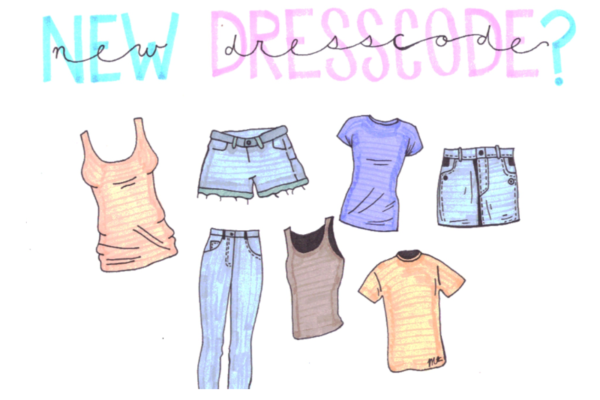Student mental health issues rise through pandemic
“There’s just so much hopelessness, and teenagers have a hard time understanding just how temporary this is,” psychologist Kristine Brandy from The San Diego Union-Tribune said. “Kids who used to complain about school are now saying ‘I’m missing school.’”
Life as we once knew it has been at a standstill for the majority of people worldwide due to the COVID-19 pandemic and quarantine restrictions that have been imposed for over a year now. While it’s true that the week leading up to Friday, March 13 of 2020, was catalytic for just about everyone, no one could have foreseen what the future would bring. Furthermore, no one could have predicted that students would learn virtually, from home, for almost a year. As a result, just about everyone, particularly students of all ages, have been hit hard by isolating and it’s affecting their mental health in ways that once seemed unimaginable.
During adolescence, children generally thrive off of interacting with peers; for many students, school is a place where they can feel like themselves, engage in learning, see friends regularly and actually have fun. Schools are supposed to serve as a safe haven, as well as a place where students can find help if necessary; school related help of course, but adults are also available for students if there is some sort of crisis.
Now, however, students have become deprived of this necessary interaction until a few weeks ago, when students had the option of returning to school face to face. For some though, class consisted and still consists of lying in bed all day, sitting transfixed in front of a computer for hours, and begrudgingly completing assignments given throughout the day. On top of that, the workload seems to have become much larger at many schools, as classes were cut in half and changed from year long courses to only a semester.
According to a recent study conducted by the Journal of Medical Internet Research, 195 college students participated in a study about mental health during the pandemic. Of those students, 71 percent of them reported high levels of anxiety and depression.
This sudden change, one that seems never ending, in the classroom environment has caused students’ mental health to plummet dramatically, and many students are unable to reach out for help since they’re not in school and it may be more difficult to ask for help..
Since COVID-19 reared its ugly head, the Center of Disease Control (CDC) and various other scientists have implored schools to close, for people to quarantine, wear masks, social distance, and to basically become hermits and only interact with close family. Although restrictions have been eased in most states and students have the option to return to school, many have chosen not to because it ‘doesn’t seem like real school anymore’ and wearing a mask all day seems less than desirable. Furthermore, the freedoms that were once associated with school in general have fallen by the wayside.
So it’s not surprising that, according to the CDC, in adolescents aged 12-17-years old, mental health related hospital emergencies have risen by at least 31 percent since the end of 2019 – beginning of 2020. This exponential growth in these same mental health related emergencies, such as overdoses and suicides, has nearly doubled as the pandemic rages on a year later.
Yet, when countries have implemented scientific rules to combat the virus correctly, referencing scientific data, the quarantine only lasted for, at the very least, a few months. Since then, life in these countries, such as New Zealand, has returned to near normal, proving that suggestions for containing the virus, or the use of scientific data has been both effective and vital.
While other countries have utilized month long quarantine restrictions that have already proven to be effective, the year long restrictions imposed on Americans have still resulted in over 500,000 deaths, and has impaired the mental health of adults and children alike.
So, it would seem that the U.S. failed to implement these same restrictions correctly, choosing to make the virus more political, which has left many Americans still out of work and students still ‘learning’ virtually. Even with the advice given from the CDC, the previous White House COVID task force and other prominent experts in disease control, people around the country have ignored the suggestions.
Now, as vaccines roll out, there is a new push for students to funnel back into the classroom, although this sudden change of pace may also prove to be difficult. Schools do not look the same and students, after attending ‘new’ school for only a few days, are returning to virtual school.
Thus, it is vital for students to check in on their peers to ensure that their mental health is secure. And, it is so important that if a student finds themselves struggling, to please reach out to a counselor, a trusted friend, or an adult.





